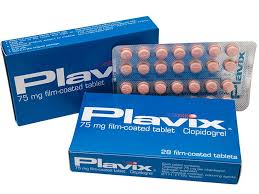Paser
Paser, known in the medical realm as para-aminosalicylic acid (PAS), is a distinguished medication primarily employed in the battle against tuberculosis (TB), particularly multidrug-resistant tuberculosis (MDR-TB). As a second-line antituberculosis agent, it is prescribed when first-line treatments such as isoniazid or rifampin are rendered ineffective due to resistance or adverse reactions. This article offers an in-depth exploration of Paser, encompassing its applications, dosage guidelines, potential side effects, and necessary precautions.

Having been utilized since the 1940s, Paser was among the pioneering effective treatments for tuberculosis, though its current application is largely confined to resistant cases, thanks to the emergence of more advanced pharmaceuticals.
Applications
Paser is integral to combination therapy for tuberculosis, particularly in the following contexts:
Multidrug-Resistant Tuberculosis (MDR-TB):
It proves beneficial in instances where the TB bacteria exhibit resistance to first-line medications such as isoniazid and rifampin.
Intolerance to First-Line Medications:
Paser may be administered when patients experience severe side effects from other TB treatments.
Extensively Drug-Resistant Tuberculosis (XDR-TB):
In scenarios where TB is resistant to both first-line and second-line therapies, Paser is utilized in conjunction with other second-line drugs.
Paser is never prescribed in isolation; it is always part of a comprehensive multidrug regimen to avert the emergence of further resistance.
Dosage and Administration
Generally available in granule or tablet form and is administered orally. The dosage is tailored to the patient’s age, weight, and overall health status:
Adults:
The standard dosage is 4 grams (equivalent to one packet of granules) taken three times daily with meals, culminating in a total daily intake of 12 grams.
Children:
The dosage is determined by body weight, typically set at 150 mg for each kilogram per day, administered in two or three separate doses.
Duration:
The course of treatment with Paser may extend from 6 to 24 months, contingent upon the infection’s severity and the patient’s response to the therapy.
Administration Tips:
Paser granules should be blended with a soft food, such as applesauce or yogurt, or dissolved in a liquid to facilitate easier ingestion. It is advisable to take it with food to mitigate any potential stomach discomfort.
Benefits
Effective Against Drug-Resistant TB:
Paser is instrumental in the fight against multidrug-resistant TB (MDR-TB) and extensively drug-resistant TB (XDR-TB) when other therapies prove ineffective.
Well-Tolerated in Combination Therapy:
While some gastrointestinal side effects may occur, Paser is generally well-accepted as part of a comprehensive multidrug treatment plan.
Prevents Resistance:
When combined with other medications, Paser diminishes the risk of bacteria developing additional resistance.
Potential Side Effects
As with all pharmaceuticals, Paser may induce side effects that range from mild to severe. It is crucial to observe these symptoms closely and seek medical advice if they persist.
Common Side Effects:
– Nausea
– Vomiting
– Diarrhea
– Abdominal pain
– Loss of appetite
Serious Side Effects:
– Allergic Reactions: Symptoms may include rash, itching, swelling, or difficulty breathing.
– Hepatotoxicity: Liver damage may be indicated by jaundice, dark urine, or elevated liver enzymes.
– Hypersensitivity Reactions: Symptoms can include fever, joint pain, or skin eruptions.
– Malabsorption Syndrome: Paser may disrupt the absorption of other nutrients or medications.
Precautions and Contraindications
Liver Conditions:
Individuals with existing liver ailments should approach the use with caution, as it may worsen liver function.
Renal Conditions:
As Paser is eliminated through the kidneys, those with kidney impairment may need to adjust their dosage accordingly.
Allergic Reactions:
Patients with a known hypersensitivity to para-aminosalicylic acid should refrain from using this medication.
Pregnancy and Lactation:
Paser is categorized as Pregnancy Category C, indicating that risks cannot be entirely dismissed. It should only be administered to pregnant women when the advantages significantly outweigh the potential risks. Its use during breastfeeding is discouraged due to possible effects on the nursing child.
Drug Interactions:
Paser may interact with various medications, such as digoxin and certain antiepileptic drugs, potentially altering their efficacy. Additionally, it may hinder the absorption of vitamin B12 and folate, which could lead to deficiencies over time.
Storage Instructions:
Paser granules should be kept at room temperature, shielded from direct sunlight and moisture. It is crucial to maintain the granules in their sealed packets to prevent air exposure, which can diminish their effectiveness.
Paser Compared to Other TB Treatments:
Paser stands apart from first-line TB medications like isoniazid and rifampin in several respects. While it is less potent, it plays a vital role in treating resistant cases. Gastrointestinal side effects are more frequently associated with Paser than with newer alternatives. Furthermore, unlike some TB treatments, Paser does not significantly contribute to neurotoxicity.
Conclusion:
Paser is an essential asset in combating drug-resistant tuberculosis. Although its usage has diminished with the advent of more effective first-line therapies, it remains crucial for patients suffering from MDR-TB or XDR-TB. Adhering to prescribed dosages, proper administration, and vigilant monitoring for side effects are paramount to the successful treatment with Paser. As always, it is advisable to consult a healthcare professional for tailored guidance and management.






